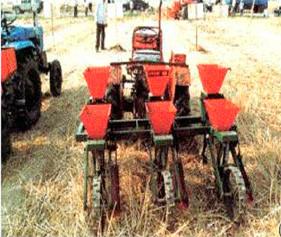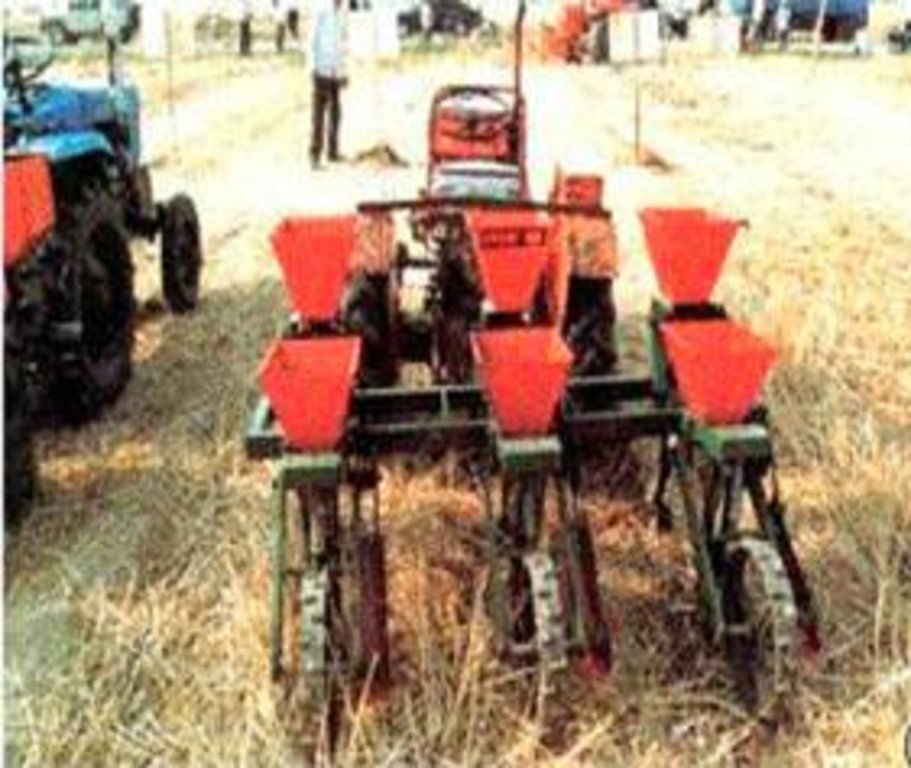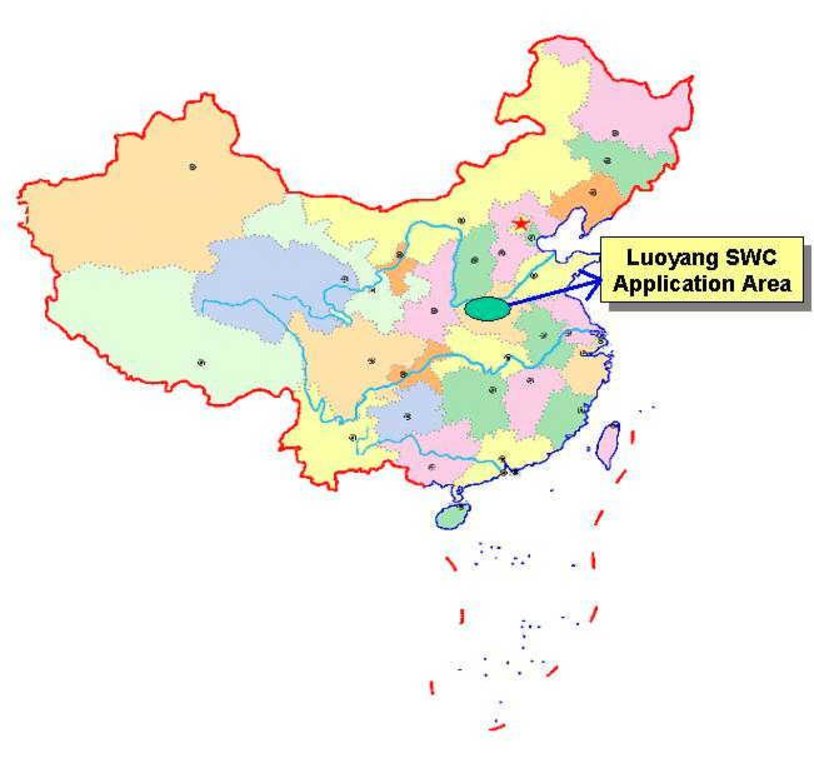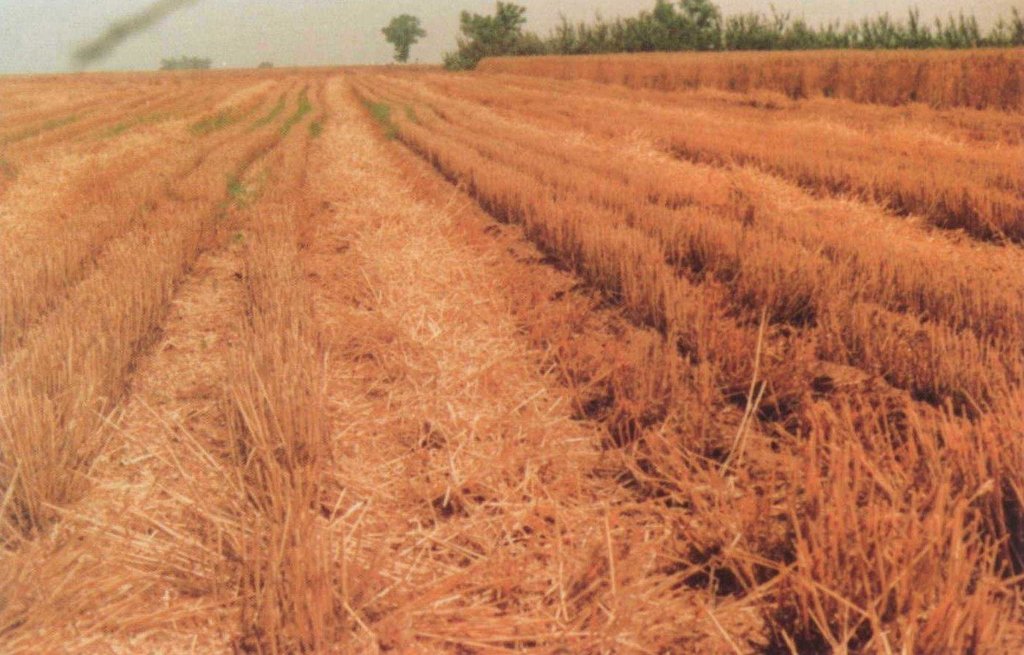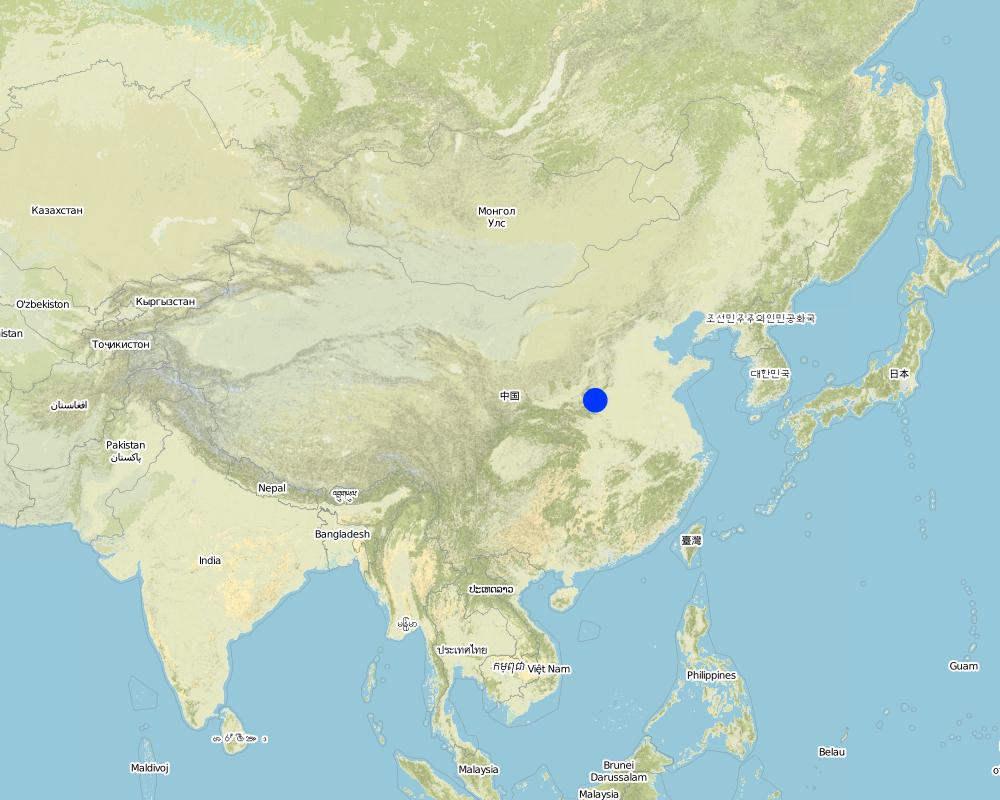Zero Tillage [China]
- Creation:
- Update:
- Compiler: Zhanguo Bai
- Editor: –
- Reviewer: Laura Ebneter
approaches_2411 - China
View sections
Expand all Collapse all1. General information
1.2 Contact details of resource persons and institutions involved in the assessment and documentation of the Approach
SLM specialist:
Wang Deshui
(8610) 68918672
Institute of Soil & Fertilizer, Chinese Academy of Agricultural Sciences (CAAS)
12 zhong guan cun south street, Beijing 100081, P.R. of China
China
Name of the institution(s) which facilitated the documentation/ evaluation of the Approach (if relevant)
Institute of Agricultural Resources and Regional Planning of Chinese Academy of Agricultural Sciences (CAAS) - China1.3 Conditions regarding the use of data documented through WOCAT
The compiler and key resource person(s) accept the conditions regarding the use of data documented through WOCAT:
Yes
1.4 Reference(s) to Questionnaire(s) on SLM Technologies
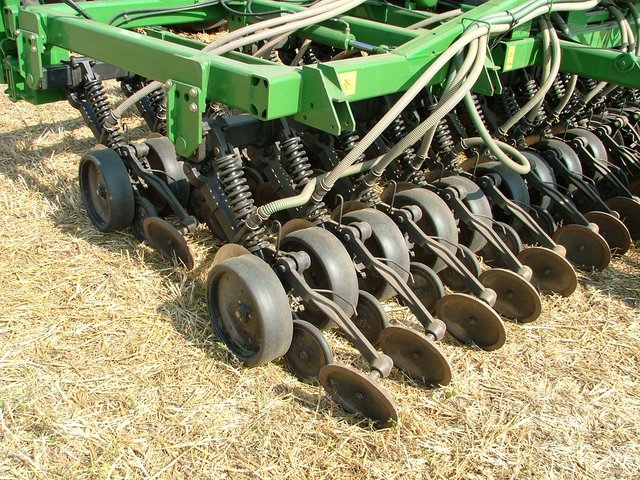
No-till agriculture [Hungary]
No-till agriculture replaces conventional soil tillage in order to reduce costs and labour - and to provide a mulch layer on the soil surface from the residues of the previous crop: this protects the soil surface and its ecology.
- Compiler: Brigitta Szabó
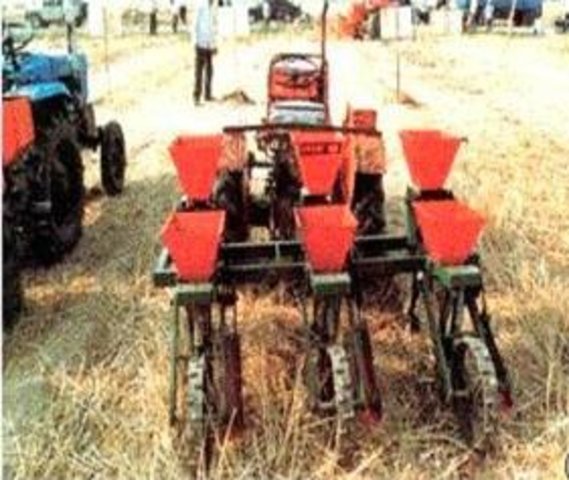
Zero Tillage [China]
Zero tillage technology was developed to protect the soils from sealing rainfall, to achieve and maintain a open internal soil structure, to enhance biological processes in the soil, and to develop a means for safe disposal of any surface runoff that nevertheless will occur.
- Compiler: Zhanguo Bai
2. Description of the SLM Approach
2.1 Short description of the Approach
Zero tillage approach was developed to protect the soils from sealing rainfall, to achieve and maintain a open internal soil structure, to enhance biological processes in the soil, and to develop a means for safe disposal of any surface runoff that nevertheless will occur.
2.2 Detailed description of the Approach
Detailed description of the Approach:
Sustainable agriculture in the dry and semidry regions in the north China, especially on the slope farmland is searching always based on the ecological balance. Conservative tillage such as zero, reduced and subsoiling tillage are important to keep soil fertility. Mulching is also a way to improve the soil organic matter. So no tillage with mulching is an approach to do this. No tillage lets all rainfall in the soils and avoid runoff occur.
2.3 Photos of the Approach
2.5 Country/ region/ locations where the Approach has been applied
Country:
China
Region/ State/ Province:
Henan province
Map
×2.6 Dates of initiation and termination of the Approach
Indicate year of initiation:
1995
Year of termination (if Approach is no longer applied):
2003
2.7 Type of Approach
- project/ programme based
2.8 Main aims/ objectives of the Approach
The Approach focused mainly on SLM with other activities (Reduction of dust devil that occur in North China.)
The main objectives of the approach is to apply conservation tillage for sustainable agricultural development.
The SLM Approach addressed the following problems: Traditional tillage (multi-till) with little return of organic matters to soils results in soil fertility decline and nutrient loss as well as yield decrease. This approach is designed to change the traditional cultivation ways to conservation tillage.
2.9 Conditions enabling or hindering implementation of the Technology/ Technologies applied under the Approach
availability/ access to financial resources and services
- hindering
buying no till machine and tractor
Treatment through the SLM Approach: subsidy and adjust crop planting pattern
legal framework (land tenure, land and water use rights)
- enabling
The existing land ownership, land use rights / water rights helped a little the approach implementation: Because land ownership belongs to state and land users can only lease land.
knowledge about SLM, access to technical support
- hindering
organizing subdivided householders together
3. Participation and roles of stakeholders involved
3.1 Stakeholders involved in the Approach and their roles
- local land users/ local communities
Work equally divided between men and women (experimental areas selected on the basis of the landforms, contributed to diff, households). Householders organized by local committee or by implementation
- SLM specialists/ agricultural advisers
- teachers/ school children/ students
- national government (planners, decision-makers)
3.2 Involvement of local land users/ local communities in the different phases of the Approach
| Involvement of local land users/ local communities | Specify who was involved and describe activities | |
|---|---|---|
| initiation/ motivation | passive | Mainly:interviews/questionnaires; partly: public meetings; Generally local and/or village committee call land users who involved in the SWC project together and illustrate the purpose and obligation. |
| planning | external support | rapid/participatory rural appraisal; Detailed planning are addressed to whose who take part in the activities. |
| implementation | interactive | responsibility for minor steps; Each step and procedures are guided and checked for implementation. |
| monitoring/ evaluation | passive | measurements/observations; Mainly done by the researchers and local government staffs not by local land users. |
| Research | interactive | on-station; The effect and impacts of the SWC technology on the soil and environment are investigated and studied on experimental station and on farm. |
3.4 Decision-making on the selection of SLM Technology/ Technologies
Specify who decided on the selection of the Technology/ Technologies to be implemented:
- politicians/ leaders
Explain:
Decisions on the choice of SLM Technology were made directive (top-down).
Decisions on the method of implementing the SLM Technology were made mainly by SLM specialists with consultation of land users.
4. Technical support, capacity building, and knowledge management
4.1 Capacity building/ training
Was training provided to land users/ other stakeholders?
Yes
Specify who was trained:
- land users
- SWC specialists, extensionists/trainers
Form of training:
- farmer-to-farmer
- demonstration areas
- public meetings
- courses
Subjects covered:
Teaching them how to operate tractor/tillage with mulching residuals and fertilizing as well as seeding; to understand the importance of the roles of the SWC etc.
4.2 Advisory service
Do land users have access to an advisory service?
Yes
Specify whether advisory service is provided:
- on land users' fields
Describe/ comments:
Name of method used for advisory service: In situ demonstration and training; Key elements: Demonstration, Training, farmer visit; 1) Advisory service was carried out through: government's existing extension system, projects own extension structure and agents 2) Advisory service was carried out through: government's existing extension system, projects own extension structure and agents; Extension staff: mainly government employees 3) Target groups for extension: land users; Activities: Demonstration, training
Advisory service is quite adequate to ensure the continuation of land conservation activities; Top-down agricultural/SWC technology extension service system has been established at variable government levels, they have capability of extension all kinds of the new techniques.
4.3 Institution strengthening (organizational development)
Have institutions been established or strengthened through the Approach?
- yes, greatly
Specify the level(s) at which institutions have been strengthened or established:
- local
Specify type of support:
- financial
- capacity building/ training
- equipment
4.4 Monitoring and evaluation
Is monitoring and evaluation part of the Approach?
Yes
Comments:
bio-physical aspects were regular monitored through measurements
technical aspects were regular monitored through measurements
land users involved aspects were regular monitored through observations
There were few changes in the Approach as a result of monitoring and evaluation
4.5 Research
Was research part of the Approach?
Yes
Specify topics:
- ecology
- technology
Give further details and indicate who did the research:
The successful results of the SWC study obtained by the SWC approach are widely applied to the control of the dust devil, and ecological recover. Research was carried out both on station and on-farm
5. Financing and external material support
5.1 Annual budget for the SLM component of the Approach
If precise annual budget is not known, indicate range:
- 100,000-1,000,000
Comments (e.g. main sources of funding/ major donors):
Approach costs were met by the following donors: local community / land user(s) (National - Central government): 30.0%; government: 60.0%; international: 5.0%; other: 5.0%
5.3 Subsidies for specific inputs (including labour)
- equipment
| Specify which inputs were subsidised | To which extent | Specify subsidies |
|---|---|---|
| machinery | partly financed | |
- agricultural
| Specify which inputs were subsidised | To which extent | Specify subsidies |
|---|---|---|
| fertilizers | partly financed | |
- infrastructure
| Specify which inputs were subsidised | To which extent | Specify subsidies |
|---|---|---|
| community infrastructure | partly financed | |
If labour by land users was a substantial input, was it:
- voluntary
Comments:
Labour was voluntary, paid in cash and rewarded with other material support.
In the past (before 1980's), SWC activities are mainly done by community members through obligation. Nowadays under the conditions of economic market, people unwill to do this voluntary, they concern return of their input for SWC.
5.4 Credit
Was credit provided under the Approach for SLM activities?
Yes
Specify conditions (interest rate, payback, etc.):
Interest rate charged: 2.3%; repayment conditions: After 2 to 5 years when SWC produces benefits, loaner should repay.
Interest was lower than market rate.
6. Impact analysis and concluding statements
6.1 Impacts of the Approach
Did the Approach help land users to implement and maintain SLM Technologies?
- No
- Yes, little
- Yes, moderately
- Yes, greatly
Soil & water loss reduced much and soil fertility is greatly improved with increase in yield.
Did the Approach improve issues of land tenure/ user rights that hindered implementation of SLM Technologies?
- No
- Yes, little
- Yes, moderately
- Yes, greatly
Subdivision and lease of the land would hinder SWC implementation. The problem is likely to be overcome in the near future. Farmers worry that their land would transfer to others, well organizing could reduce the negative impact through prolong the lease period of land use.
Did other land users / projects adopt the Approach?
- No
- Yes, little
- Yes, moderately
- Yes, greatly
6.3 Sustainability of Approach activities
Can the land users sustain what has been implemented through the Approach (without external support)?
- yes
6.4 Strengths/ advantages of the Approach
| Strengths/ advantages/ opportunities in the land user’s view |
|---|
| Raising yield and soil moisture as well as fertility. (How to sustain/ enhance this strength: Leaving high residual straw and cover soil surface.) |
| Strengths/ advantages/ opportunities in the compiler’s or other key resource person’s view |
|---|
| Practical (How to sustain/ enhance this strength: Financial support from various government) |
| Very welcome by farmers. Great economic and ecological benefits (How to sustain/ enhance this strength: enlarging extension) |
6.5 Weaknesses/ disadvantages of the Approach and ways of overcoming them
| Weaknesses/ disadvantages/ risks in the land user’s view | How can they be overcome? |
|---|---|
| Shortage of finance | Raising money |
| Weaknesses/ disadvantages/ risks in the compiler’s or other key resource person’s view | How can they be overcome? |
|---|---|
| Hard to widely extension due to expensive tillage machinery | Government should financially support |
7. References and links
7.1 Methods/ sources of information
- field visits, field surveys
- interviews with land users
7.2 References to available publications
Title, author, year, ISBN:
Report of ninth-Five plan project on Dryland Farming, Jan 2002,
Available from where? Costs?
internal reference
Title, author, year, ISBN:
Introduction of Luoayng physicography
Available from where? Costs?
unpublished materials
Title, author, year, ISBN:
No-till farming for sustainable rural development, 2002
Available from where? Costs?
World Bank
Title, author, year, ISBN:
A road map from conventional to no-till farming, 2002
Available from where? Costs?
World Bank
Title, author, year, ISBN:
Conservation agriculture, 2001
Available from where? Costs?
FAO
Links and modules
Expand all Collapse allLinks

No-till agriculture [Hungary]
No-till agriculture replaces conventional soil tillage in order to reduce costs and labour - and to provide a mulch layer on the soil surface from the residues of the previous crop: this protects the soil surface and its ecology.
- Compiler: Brigitta Szabó

Zero Tillage [China]
Zero tillage technology was developed to protect the soils from sealing rainfall, to achieve and maintain a open internal soil structure, to enhance biological processes in the soil, and to develop a means for safe disposal of any surface runoff that nevertheless will occur.
- Compiler: Zhanguo Bai
Modules
No modules


